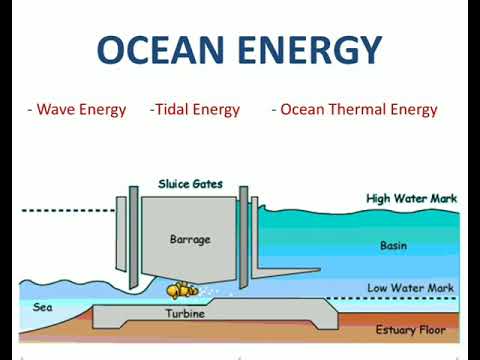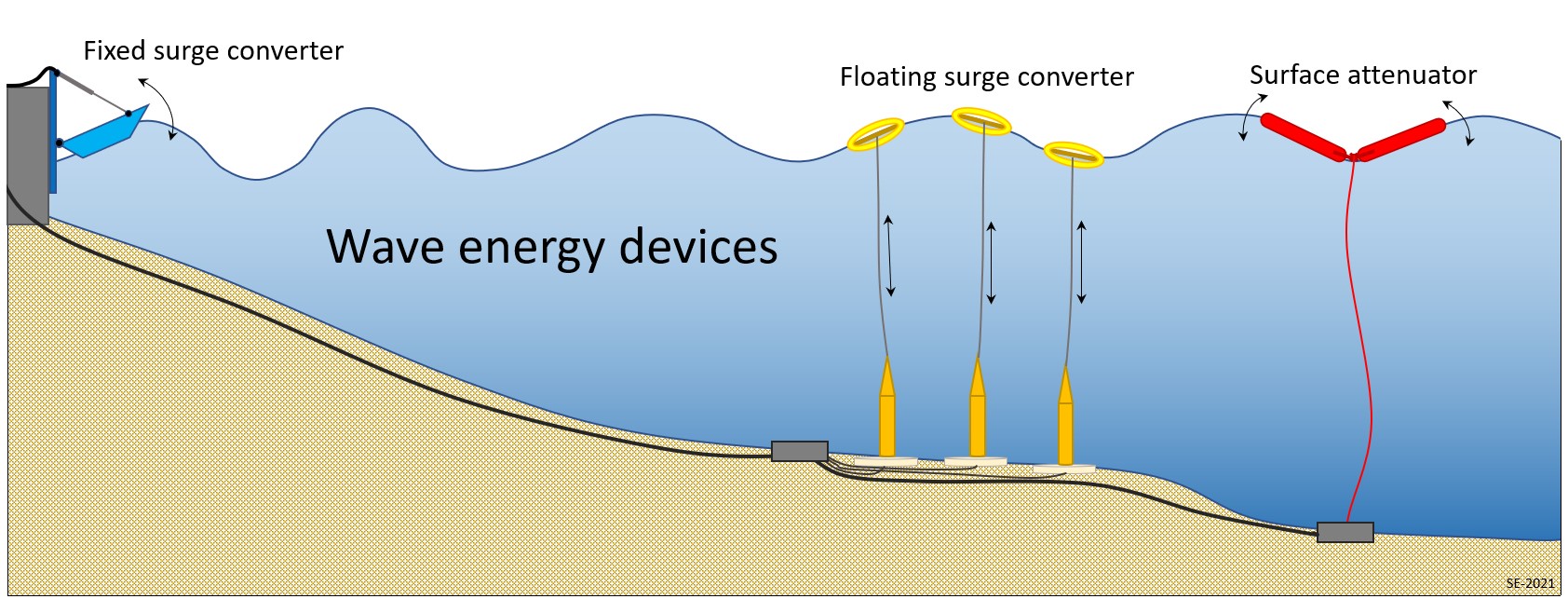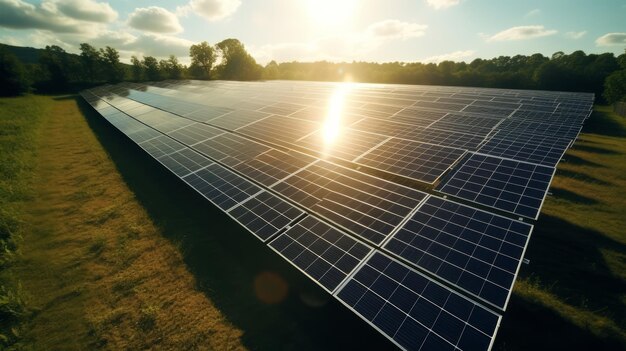
Unlocking the Ocean’s Power: A Beginner’s Guide to Wave, Tidal, and Thermal Energy
The vast, mysterious oceans cover over 70% of our planet’s surface. For centuries, they have fascinated humanity, providing food, trade routes, and inspiration. But beneath their restless surface lies an immense, untapped potential: a constant, clean, and renewable energy source that could revolutionize how we power our world.
As the global demand for energy continues to rise and the urgency of climate change becomes undeniable, the search for sustainable alternatives to fossil fuels is more critical than ever. While solar and wind power have gained significant traction, the ocean offers unique advantages, often boasting higher predictability and consistency.
In this comprehensive guide, we’ll dive deep into the fascinating world of ocean energy, exploring its three main forms: wave energy, tidal energy, and ocean thermal energy conversion (OTEC). We’ll break down how each works, discuss their benefits, and examine the challenges they face, all in a language that’s easy for beginners to understand. Let’s unlock the ocean’s power together!
What is Ocean Energy?
At its core, ocean energy, also known as marine energy, refers to technologies that harness the power generated by the ocean’s movements and temperature differences. Unlike fossil fuels, which are finite and release greenhouse gases when burned, ocean energy is:
- Renewable: The ocean’s movements and thermal gradients are naturally replenished.
- Clean: It produces little to no greenhouse gas emissions during operation.
- Sustainable: It can provide a long-term energy solution without depleting natural resources.
The ocean is a dynamic system, constantly in motion due to forces like the wind, the moon’s gravitational pull, and the sun’s heat. These forces create the waves, tides, and temperature differences that we can convert into usable electricity.
The Three Pillars of Ocean Power
Let’s explore the three primary ways we can tap into the ocean’s incredible energy reserves:
1. Wave Energy: Riding the Ocean’s Undulations
Imagine the sheer force of a crashing wave on a stormy day. Wave energy technologies aim to capture this raw, kinetic energy and convert it into electricity. It’s about turning the up-and-down, back-and-forth motion of ocean waves into a steady power supply.
How it Works (The Basic Idea):
Wave energy converters are essentially machines designed to move or interact with the motion of waves. As waves pass, they cause parts of the device to move, much like how wind turns a wind turbine. This mechanical motion is then used to drive a generator, producing electricity.
Types of Wave Energy Converters:
There are many different designs being developed and tested, each with its own approach:
- Point Absorbers: These are typically buoy-like structures that float on the surface of the water. As waves pass, the buoy bobs up and down. This vertical motion is used to pump a fluid or directly drive a generator. Think of a fishing bobber, but much larger and designed to generate power.
- Example: Devices that use the relative motion between a floating buoy and a submerged structure.
- Attenuators: These are long, snake-like structures that float on the surface, positioned parallel to the direction of the waves. As a wave moves along the device, different sections move relative to each other, activating hydraulic pumps that drive a generator.
- Example: The famous "Pelamis" device (though commercialized versions are still emerging).
- Overtopping Devices: These structures are designed to capture waves as they break, allowing the water to flow into a reservoir at a higher elevation. The water is then released back to the ocean through turbines, similar to how a conventional hydropower dam works.
- Example: A sloped ramp that funnels water into a basin.
- Oscillating Water Columns (OWC): These devices are often fixed to the seabed or shoreline. They consist of a partially submerged chamber with an opening to the sea below the waterline. As waves enter the chamber, they cause the water level inside to rise and fall, compressing and decompressing the air above it. This moving air drives a turbine connected to a generator.
- Example: A hollow concrete structure with an air turbine on top.
Advantages of Wave Energy:
- High Power Density: Waves carry a lot of energy in a small space compared to wind or solar.
- Predictable: While not as perfectly predictable as tides, wave patterns can be forecasted several days in advance based on weather systems, allowing for better grid management than intermittent solar or wind.
- Available Globally: Many coastlines around the world experience significant wave activity.
- No Fuel Costs: Once built, the "fuel" (waves) is free and never runs out.
Challenges of Wave Energy:
- Harsh Environment: Operating in the ocean is tough! Devices must withstand powerful storms, corrosive saltwater, and marine growth.
- High Costs: Research, development, construction, and maintenance in the marine environment are expensive.
- Environmental Impact: Potential concerns include noise pollution, impact on marine life (e.g., collision risk), changes to sediment transport, and visual impact.
- Grid Connection: Connecting offshore devices to the onshore electricity grid can be complex and costly.
2. Tidal Energy: Harnessing the Moon’s Pull
Tidal energy is perhaps the most predictable form of ocean energy, directly linked to the gravitational pull of the Moon and Sun on Earth’s oceans. This gravitational force causes the regular rise and fall of sea levels, known as tides. Tidal energy technologies capture the energy of this predictable ebb and flow.
How it Works (The Basic Idea):
Unlike waves, which are irregular, tides follow a precise schedule, usually occurring twice a day. This consistency makes tidal energy highly reliable. There are two main ways to harness tidal power: by building structures that capture the difference in water height (potential energy) or by using the fast-moving currents (kinetic energy).
Types of Tidal Energy Technologies:
- Tidal Barrages: These are essentially large dams built across an estuary or bay where there’s a significant difference between high and low tide. Sluice gates in the barrage allow water to flow into a basin during high tide. When the tide outside drops, the trapped water is released through turbines in the barrage, generating electricity, similar to a conventional hydroelectric dam.
- Analogy: A giant bathtub that fills up and drains, spinning a propeller as water flows out.
- Example: The La Rance Tidal Power Station in France, operational since 1966.
- Tidal Lagoons: Similar to barrages, but they enclose a body of water using man-made structures rather than blocking an entire estuary. This allows for more flexible placement and potentially less environmental impact on large ecosystems. Water flows in and out through turbines.
- Analogy: A custom-built, enclosed reservoir on the coast.
- Tidal Stream Generators (Tidal Turbines): These are like underwater wind turbines. They don’t require dams or barrages but instead capture the kinetic energy of fast-moving tidal currents in narrow channels or around headlands. The strong flow of water spins the blades of the turbine, which then drives a generator.
- Analogy: A wind turbine, but underwater and turned by water currents instead of wind.
- Example: Various prototypes being tested in strong tidal areas like the Scottish Orkney Islands.
Advantages of Tidal Energy:
- Highly Predictable: Tides are governed by celestial mechanics and can be predicted years in advance, making it a very reliable source of baseload power.
- Consistent: Unlike solar and wind, tidal power isn’t affected by weather conditions like cloud cover or calm winds.
- High Power Output: Strong tidal currents or large tidal ranges can generate substantial amounts of electricity.
- Long Lifespan: Tidal power plants, especially barrages, can have very long operational lives (50-100 years).
Challenges of Tidal Energy:
- High Initial Cost: Building large barrages or installing arrays of underwater turbines is extremely expensive.
- Limited Locations: Only specific geographical locations with high tidal ranges or strong currents are suitable.
- Environmental Impact (Barrages): Tidal barrages can significantly alter the ecosystem of an estuary, affecting fish migration, sediment transport, and habitat for birds and marine life.
- Maintenance: Underwater turbines are challenging to install, maintain, and repair.
- Intermittency (Daily): While predictable, power generation still stops during slack tides (the brief period when the tide changes direction), meaning it’s not truly 24/7 power without storage.
3. Ocean Thermal Energy Conversion (OTEC): Tapping into Temperature Differences
Ocean Thermal Energy Conversion, or OTEC, is arguably the most unique and least conventional form of ocean energy. Instead of relying on the ocean’s physical movements, OTEC harnesses the temperature difference between warm surface waters and cold deep-ocean waters to generate electricity.
How it Works (The Basic Idea):
Think of a giant heat engine. In tropical and subtropical regions, the sun heats the ocean’s surface to temperatures of 25°C (77°F) or more. Just a kilometer or two below the surface, the water remains very cold, often around 5°C (41°F), having originated from polar regions. OTEC exploits this temperature gradient (the difference in temperature) to drive a power cycle.
Types of OTEC Systems:
- Closed-Cycle OTEC: This is the most common and promising type. It uses a working fluid (like ammonia or a similar refrigerant) with a low boiling point.
- Warm surface water heats the working fluid, causing it to vaporize (turn into a gas).
- This high-pressure vapor expands and spins a turbine, which drives a generator to produce electricity.
- Cold deep-ocean water (pumped up from depths of 800-1000 meters) then cools the vapor, causing it to condense back into a liquid.
- The liquid is then pumped back to the evaporator to repeat the cycle.
- Analogy: A giant refrigerator in reverse, using the temperature difference to make electricity instead of cooling.
- Open-Cycle OTEC: This system uses the warm ocean water itself as the working fluid.
- Warm surface water is pumped into a low-pressure (vacuum) chamber, causing it to flash-evaporate into steam.
- This steam drives a turbine, generating electricity.
- The cold deep-ocean water is used to condense the steam back into fresh water, which is a valuable byproduct.
- Benefit: Produces desalinated fresh water as a bonus.
- Hybrid OTEC: Combines features of both closed-cycle and open-cycle systems to maximize efficiency and/or produce both electricity and fresh water.
Advantages of OTEC:
- 24/7 Baseload Power: Unlike solar or wind, OTEC can operate continuously, day and night, providing a stable and reliable power supply.
- Massive Potential: The temperature difference is consistently available across vast tropical and subtropical ocean regions, making it a potentially enormous energy source.
- No Fuel Costs: The "fuel" (temperature difference) is free and constantly replenished.
- Byproducts: Open-cycle OTEC can produce large quantities of desalinated fresh water, which is crucial for many island nations. It can also support mariculture (aquaculture using cold, nutrient-rich deep water).
- Low Environmental Impact: Generally considered to have a relatively low environmental footprint compared to fossil fuels, with minimal emissions.
Challenges of OTEC:
- Low Efficiency: The temperature difference is relatively small, meaning OTEC systems have low thermal efficiencies (around 3-5%). This requires moving very large volumes of water.
- High Capital Costs: Building large OTEC plants, especially the massive pipes needed to bring up cold deep water, is extremely expensive.
- Location Specific: Requires a stable temperature difference of at least 20°C (36°F), limiting its viable locations to tropical and subtropical oceans.
- Pumping Energy: A significant amount of the generated electricity is used to power the pumps that move the vast quantities of warm and cold water.
- Environmental Concerns: Potential impacts include changes to local ocean temperatures, nutrient redistribution from deep water, and effects on marine organisms drawn into the system.
Why is Ocean Energy Important for Our Future?
The pursuit of ocean energy is not just a scientific curiosity; it’s a vital component of a sustainable energy future. Here’s why:
- Climate Change Mitigation: By providing clean, carbon-free electricity, ocean energy helps reduce our reliance on fossil fuels, directly combating greenhouse gas emissions and global warming.
- Energy Security: Diversifying our energy mix with reliable ocean sources reduces dependence on volatile international fuel markets and enhances national energy independence.
- Predictability and Consistency: Especially tidal and OTEC, ocean energy can offer a more stable and predictable power supply than solar or wind, which are intermittent. This helps balance the grid and reduces the need for expensive energy storage.
- Vast Untapped Potential: The sheer scale of energy contained within the oceans is enormous, far exceeding current global energy demand.
- Job Creation and Economic Growth: The development, construction, and operation of ocean energy projects can create new industries and jobs, stimulating local and national economies.
- Remote & Island Communities: Ocean energy, particularly OTEC and smaller wave/tidal devices, can provide crucial energy independence and fresh water for remote coastal and island communities that often rely on expensive imported diesel.
Challenges Facing Ocean Energy (A Broader Look)
While the promise of ocean energy is immense, it’s crucial to acknowledge the hurdles that need to be overcome for widespread adoption:
- High Capital Costs: All forms of ocean energy require significant upfront investment for research, development, construction, and grid connection. This is often higher than established renewable technologies like solar and wind.
- Harsh Operating Environment: The marine environment is incredibly challenging. Devices must withstand corrosion from saltwater, powerful storms, biofouling (marine organisms growing on surfaces), and the constant forces of the ocean. This drives up material costs and maintenance needs.
- Environmental Concerns: While clean during operation, the construction and presence of large marine energy devices can have localized impacts on marine ecosystems, including noise pollution, habitat disruption, entanglement risk for marine life, and changes to water flow or temperature. Careful siting and mitigation measures are essential.
- Grid Integration: Connecting offshore power generation to existing onshore electricity grids can be complex and expensive, requiring new transmission infrastructure.
- Technological Maturity: Compared to solar and wind, ocean energy technologies are generally less mature. Many are still in the prototype or demonstration phase, requiring further research and development to improve efficiency, reliability, and cost-effectiveness.
- Regulatory Frameworks: Developing appropriate policies, permits, and regulatory frameworks for deploying ocean energy projects in shared marine spaces can be a complex and time-consuming process.
The Future of Ocean Energy: A Promising Horizon
Despite the challenges, the outlook for ocean energy is increasingly positive. Continuous research and development are leading to more robust, efficient, and cost-effective designs. As global energy demands grow and the imperative to decarbonize strengthens, ocean energy is poised to play a significant role in the future energy mix.
Governments and private investors are increasingly recognizing the strategic importance of marine renewable energy. Pilot projects are demonstrating viability, and innovation is addressing previous limitations. As technologies mature and economies of scale are achieved, costs are expected to decrease, making ocean energy more competitive.
Imagine a future where coastal communities are powered by the predictable ebb and flow of tides, where islands generate their own clean electricity and fresh water from the ocean’s thermal gradients, and where vast arrays of wave converters silently generate power for entire regions. This vision is not a distant dream but a tangible goal that dedicated engineers, scientists, and policymakers are working towards.
Conclusion
The ocean is a powerhouse, offering a vast, largely untapped reservoir of clean, renewable energy. From the rhythmic dance of waves to the predictable might of tides and the subtle but immense power of thermal gradients, our oceans hold the key to a sustainable energy future.
While significant challenges remain in terms to cost, technological maturity, and environmental integration, the unique advantages of ocean energy – its predictability, consistency, and sheer scale – make it an indispensable part of our global transition away from fossil fuels.
As we continue to innovate and invest in these remarkable technologies, we move closer to a world where the very forces of nature provide the clean power we need, ensuring a healthier planet for generations to come. The ocean, once just a source of wonder and resources, is now ready to become a cornerstone of our energy independence.



Post Comment